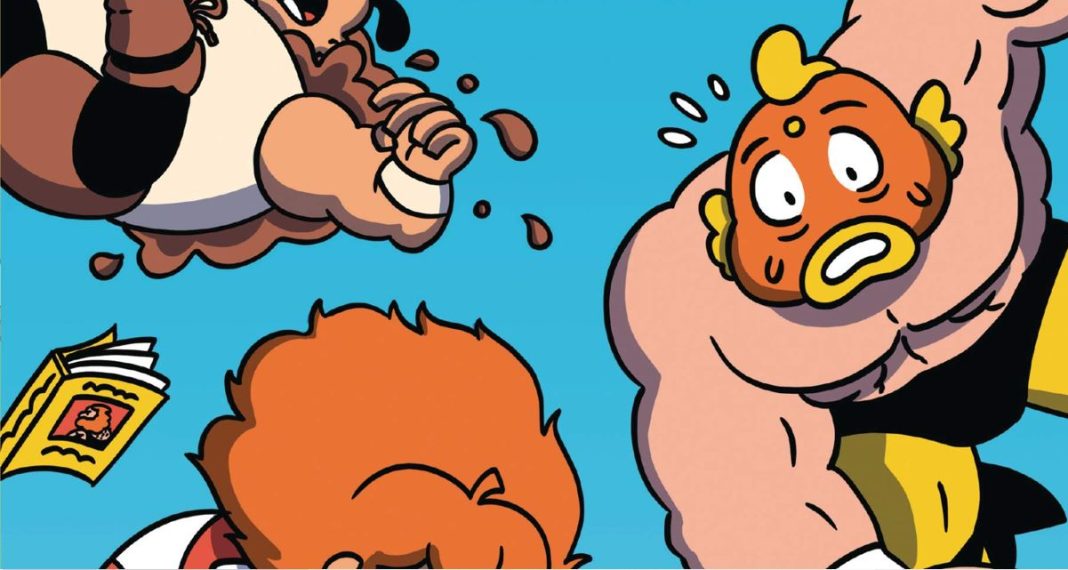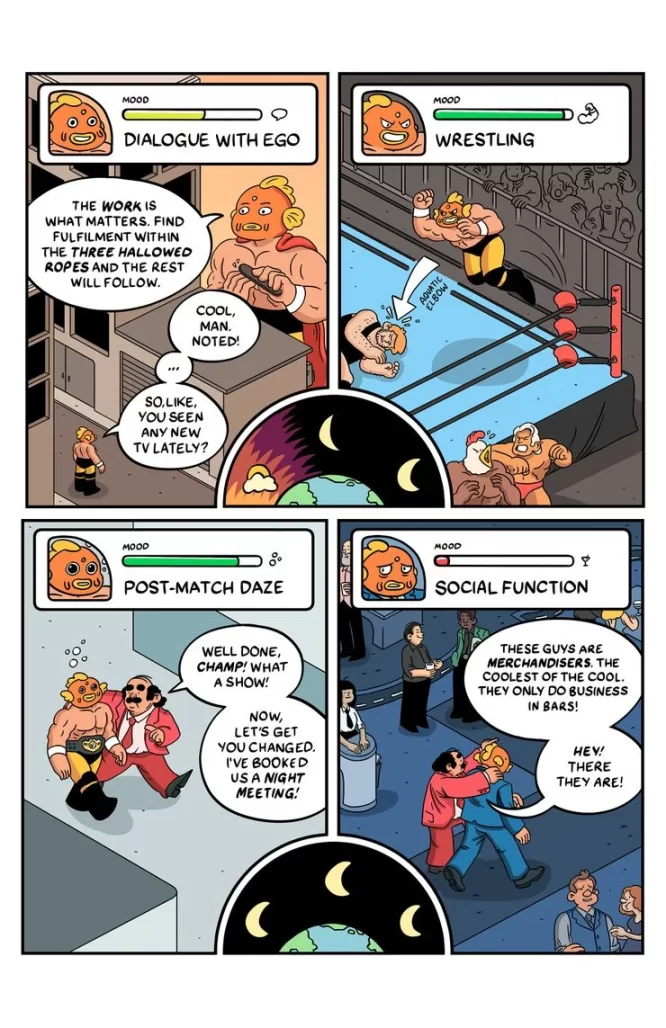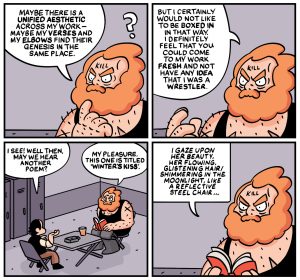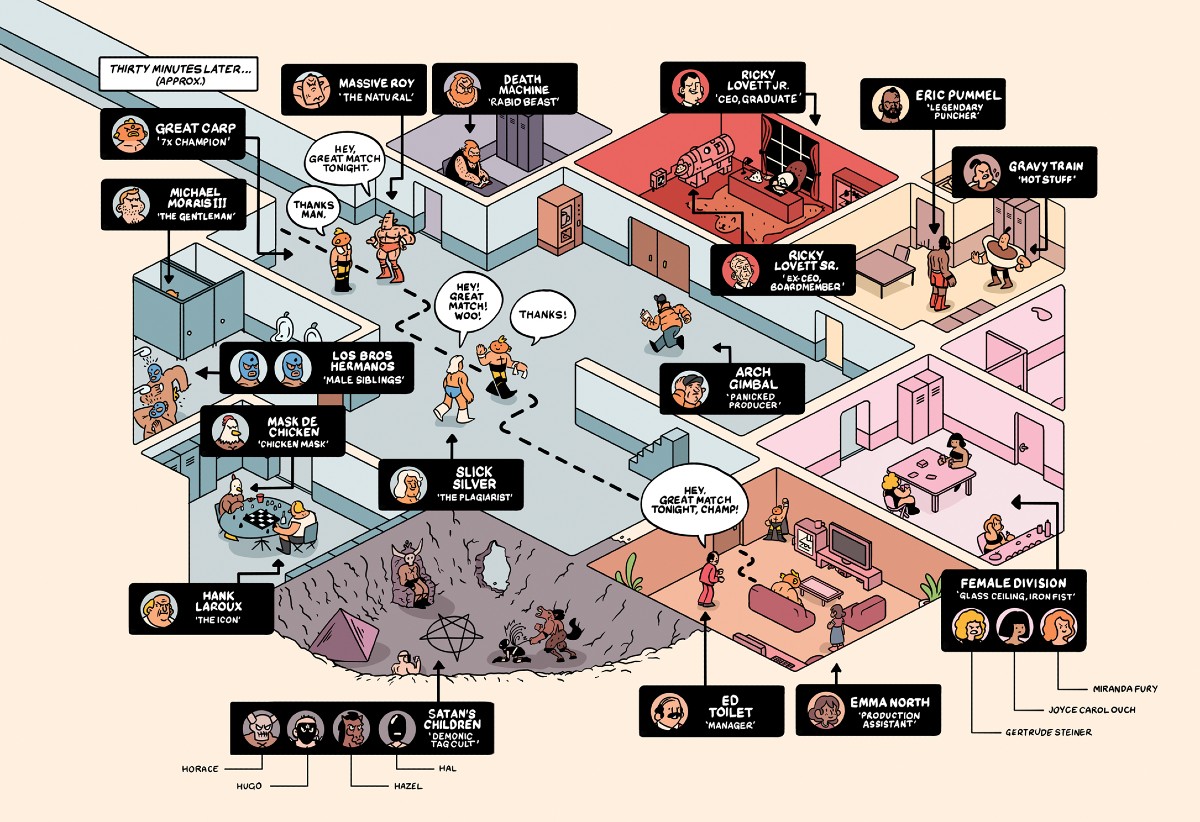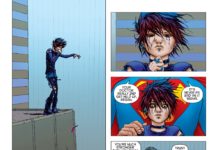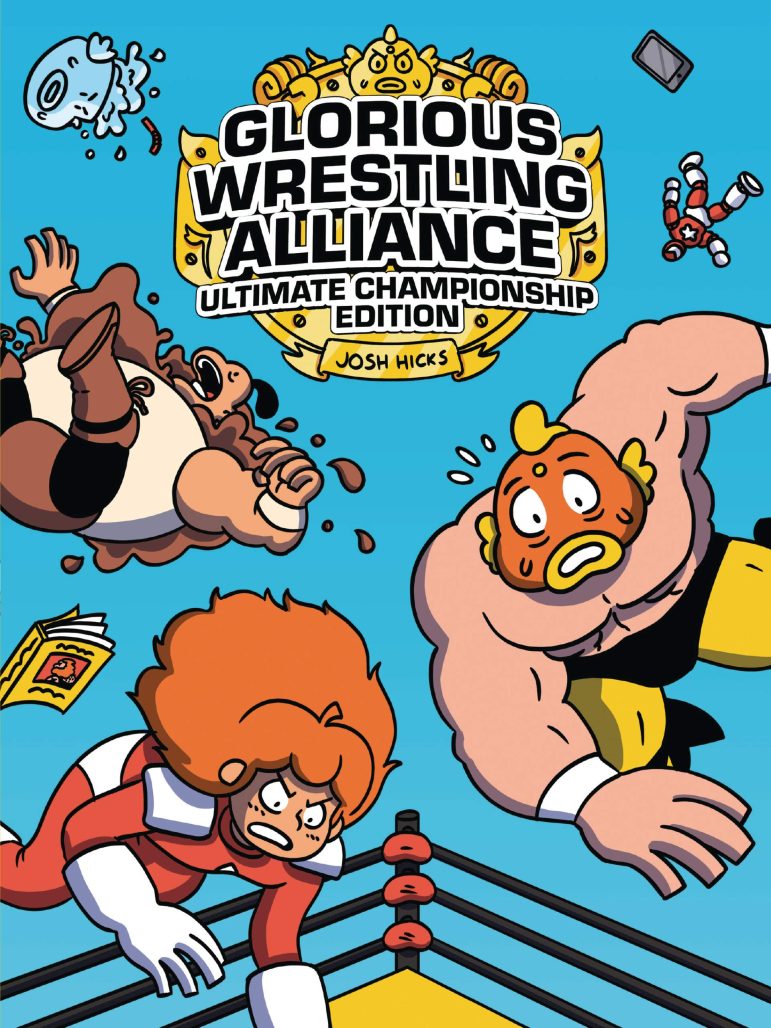
Josh Hicks is a cartoonist from South Wales and he knows wrestling. Admitting to have never wrestled professionally (although I suspect he’s dropped a few powerbombs in his lifetime), one would be hard-pressed to think Hicks doesn’t eat, drink, and live everything to do with the sport judging by his nuanced approach to it in his latest graphic novel, Glorious Wrestling Alliance. It’s perhaps one of the book’s most palpable qualities: feeling like a genuine creation that taps directly into the spirit of the wrestling life.
Glorious Wrestling Alliance (to be referred to as GWA henceforth), follows the roster of the titular wrestling promotion and its struggles with both turning a profit and keeping its many wild gimmicks from going stale. The company’s star brawler is the Great Carp, a physically imposing man with the actual head of a fish. He’s GWA’s champion, their pride and glory. He’s also a broken man, struggling with anxiety and depression despite his success.
The story isn’t only his, though. Like any good wrestling promotion, the other wrestlers that make up the roster need to contribute their own storylines to create what is essentially a living world supported by rivalries, main events, and gimmicks (a wrestler’s act, if you will, and what they represent).
In comes Miranda Fury, a female wrestler who secretly turns into the mysterious masked and gender-concealed high-flyer called Hyper Mask, a fighter who wants to smash glass ceilings and become a star to destroy the male/female categories and give everyone a fair shot at the belt. This character could’ve had an entire comic series dedicated to her journey, but Hicks knows how to space each storyline with grace and gives everyone their time in the spotlight.
Knowing each of the wrestlers is where a huge part of the fun lies with GWA, in part because some of them have very funny pun names while others comment on real athletes. Slick “The Plagiarist” Silver reminded me of Ric Flair and how his gimmick is basically an exact copy of an older wrestler’s called Buddy Rogers “The Nature Boy,” who started wrestling in the late 1930s. Flair copied him all the way up to the point of using the same finishing move as Rogers, the Figure-4 Leg Lock.
Fans of wrestling lore have a lot to chew on here, and picking up on the references is truly gratifying. My favorite character out of the bunch is Death Machine, a heavyweight beast of a man who, in his spare time, writes poetry containing verses that rhyme with wrestling moves and classic weapons. Wrestling legend Mick Foley came to mind, as he’s one of the few in the business to have actually written his wrestling biography on his own while also publishing original novels (his book Tietam Brown comes highly recommended).
These little winks here and there (heck, even the name of the promotion, GWA, is a reference to the classic NWA organization) give the book an air of myth and magic that is very unique to it. It works well because Hicks’ script is also unafraid to tackle the more difficult and problematic aspects of the industry without coming off as preachy or forced.
In fact, the book is quite forward-thinking in what wrestling can and maybe should become. The use of Hyper Mask’s character anchors those sentiments well, and it comes off as a pretty loud claim for change that more people should be aware of.
This all plays to Hicks’ wondrously animated cartooning stylings, which are quite deceptive given they have a very contemporary Saturday morning cartoon feel to them. The wrestlers in GWA aren’t the oft-portrayed neon-lit 1980s action-figure-bodied athletes we’ve grown accustomed to seeing in recent wrestling fare. They are bouncy, cute, energetic, and explosive in their own way and their designs offer a deceivingly complex contrast to the realities each of them face as their promotion goes on the road.
This is actually a good way to sum up Glorious Wrestling Alliance, a kinetic spectacle of leg drops, championship title matches, and anxiety that captures the glory of sports entertainment. It’s heartfelt and it has good intentions, militantly so in certain regards. Recommending it comes easy, but my hope is that those in the wrestling industry give it a shot. It might be able to inspire the kind of change that takes things into new directions, if only a little.


